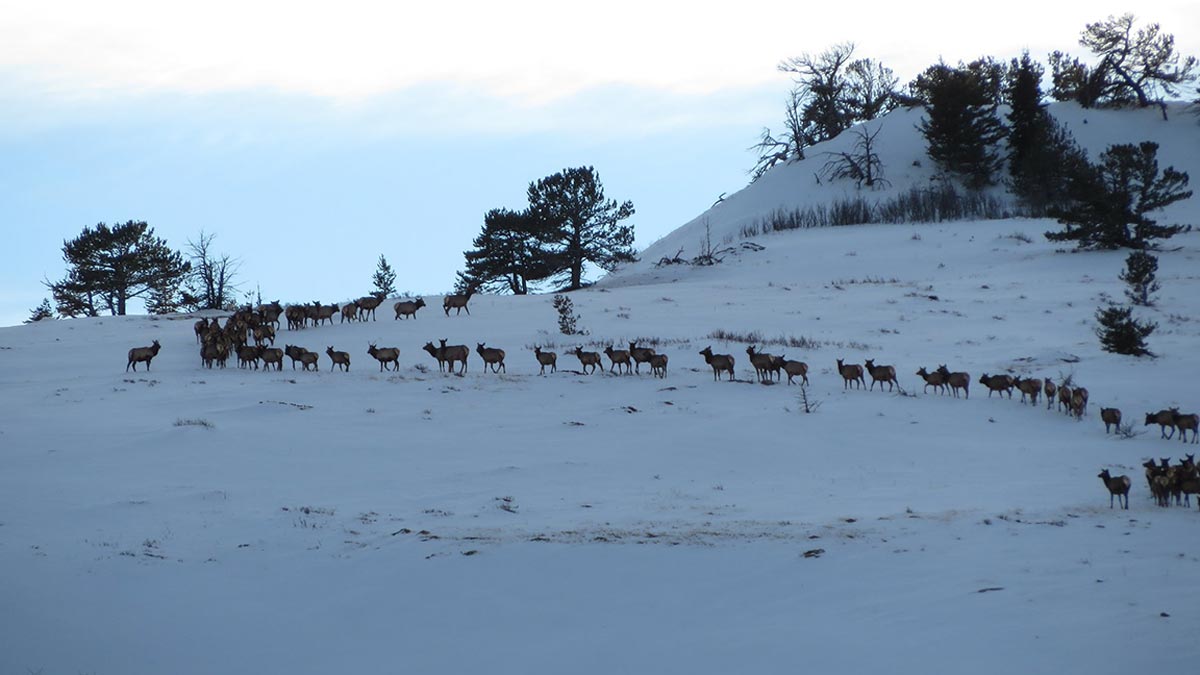Below is a joint news release from the U.S. Department of Interior.
Secretary of the Interior Deb Haaland announced several actions the Department is taking to advance its work on wildlife corridors. The Department’s efforts will focus on conservation and restoration of wildlife corridors and habitat connectivity in a way that supports conservation outcomes, honors private landowner rights, and encourages collaboration with other federal agencies, state and local governments, Tribes and other stakeholders.
“To maintain healthy species populations and ecosystems, fish and wildlife must have the freedom to move and migrate. But as habitats and migration routes continue to be impacted by climate change and become fragmented by roads, fences, energy development and other man-made barriers, wildlife are struggling to reach the necessary areas to feed, breed, and find shelter,” said Secretary Haaland. “Enhancing wildlife migration corridors and habitat connectivity is a top conservation priority, and we’re committed to cultivating strong partnerships and providing the resources and tools necessary to support healthy wildlife populations across the country.”
Secretary Haaland made the announcements during a virtual event with representatives from the Association of Fish & Wildlife Agencies, Wyoming Wildlife and Natural Resource Trust, Native American Fish and Wildlife Society, and the National Fish and Wildlife Foundation.
Secretary Haaland announced $2.5 million in grants, which have been matched by another $7 million in contributions, that will be distributed to seven states and three Tribes for a total of 13 projects through the Improving Habitat Quality in Western Big Game Migration Corridors and Habitat Connectivity program. The grant program, initially established after Secretary’s Order 3362, is administered by the National Fish and Wildlife Foundation and receives funding from the Interior Department, the Department of Agriculture, and private partners.
The Secretary also announced a first-of-its-kind agreement between the Fish and Wildlife Service and the Native American Fish and Wildlife Society to coordinate support, involvement and utilization of the National Conservation Training Center to meet conservation needs, such as improving wildlife corridors and connectivity. The Service has pledged to fund this work with an initial commitment of $450,000.
The U.S. Geological Survey, working in collaboration with state and Tribal wildlife agencies, also published the second volume of its Ungulate Migrations of the Western United States report. The report provides detailed maps of corridors, stopovers, routes and winter ranges so that migration can be taken into account by state and federal transportation officials, land and wildlife managers, planners, and other conservationists working to maintain big-game migrations in the western states.
During her remarks, Secretary Haaland also outlined how the Interior Department will advance its work on wildlife corridors through a number of steps, including:
Investing in collaborative conservation opportunities to support strategies that advance enduring conservation outcomes. These collaborative efforts will support connected lands, waters, and thriving fish and wildlife populations, reflect local needs and priorities, and improve quality of life for people. This includes continued implementation of Secretary’s Order 3362 through support for state-led science, identification of priority big game migratory habitat, technical assistance, and project implementation to advance conservation of big game species and the sagebrush ecosystem.
Prioritizing research, data collection, analysis and mapping to identify key habitats, including seasonal ranges, stopover areas, migration routes, and bottlenecks.
Collaborating with and supporting Tribal partners to conduct new wildlife migration movement studies and associated mapping as well as use existing migration data to enhance Tribal wildlife corridor and habitat connectivity priorities.
Updating agency policies, where appropriate, to identify and prioritize conservation and restoration of wildlife corridors as well as other lands and waters that advance habitat connectivity in partnership with state and Tribal wildlife managers and other stakeholders.
(Photo credit: Wyoming Game and Fish Department)
